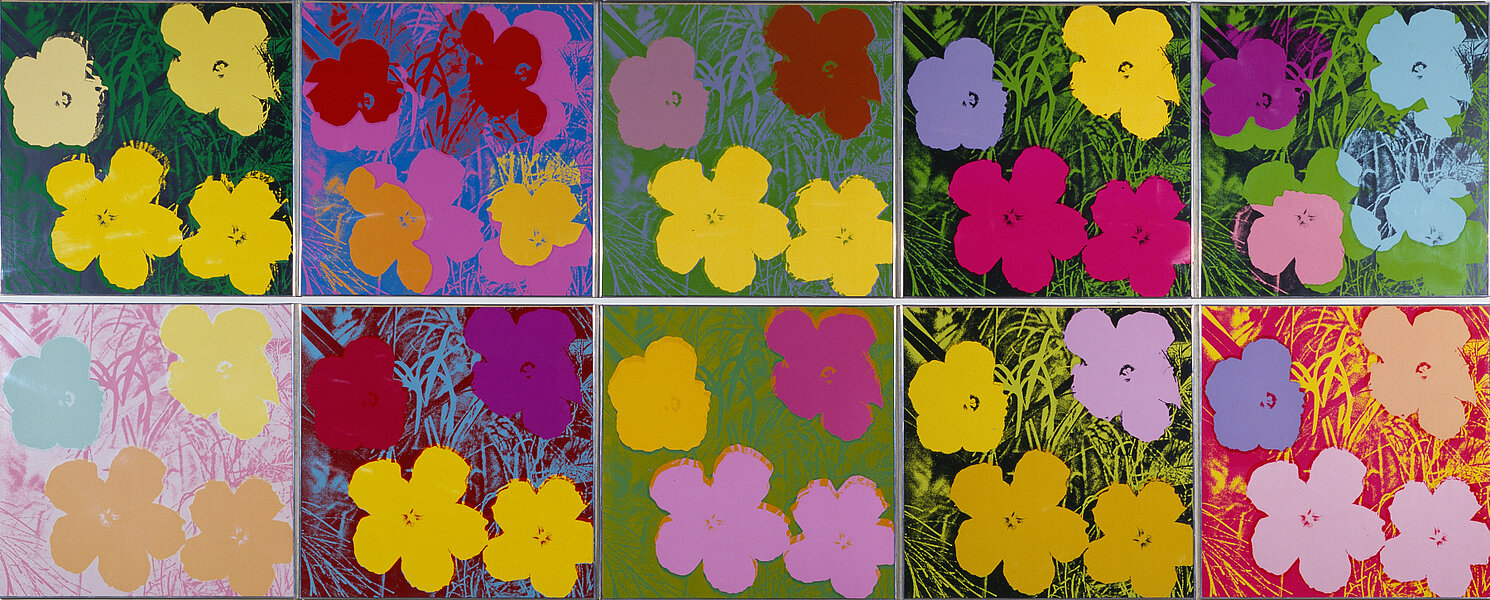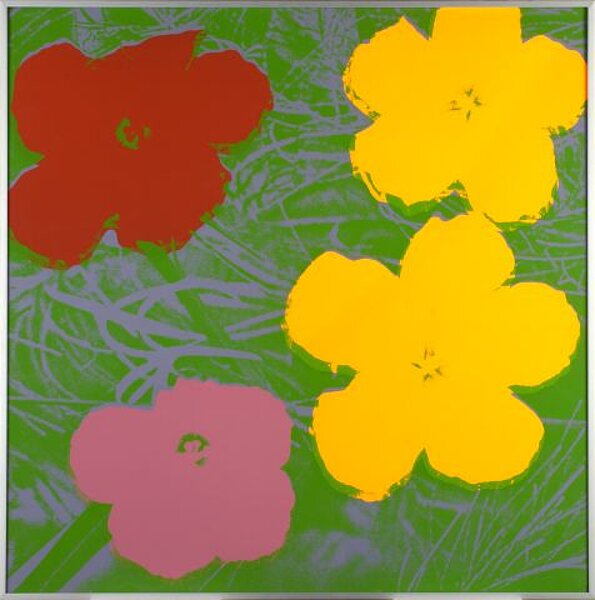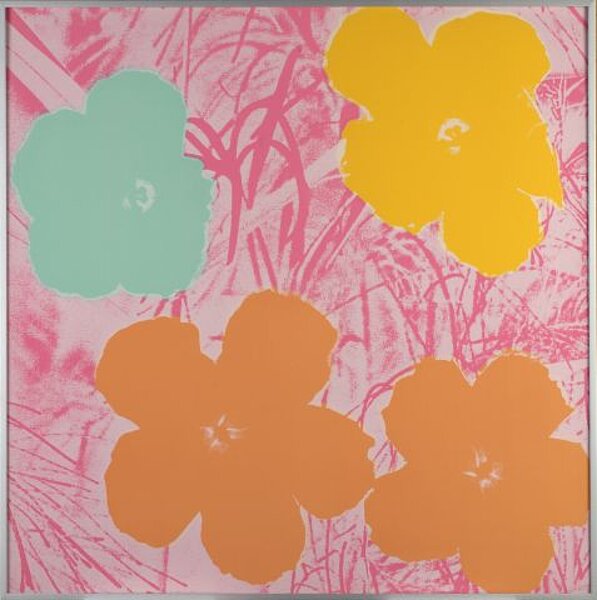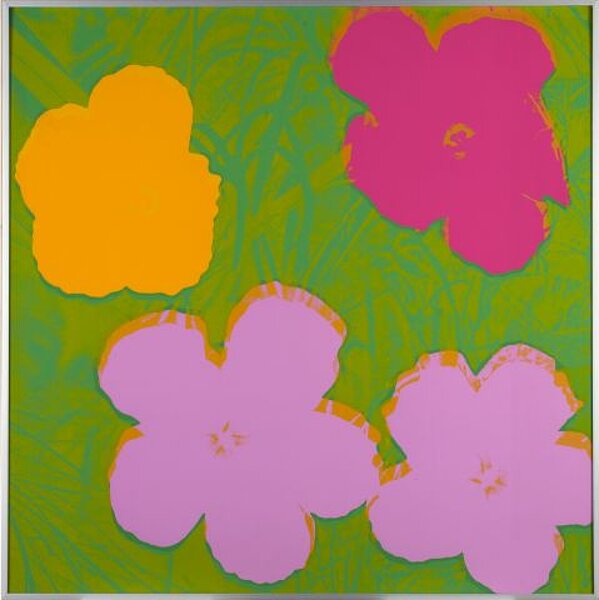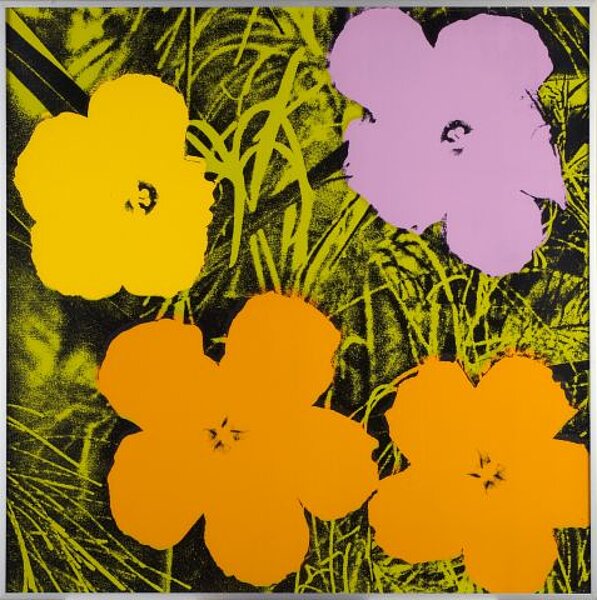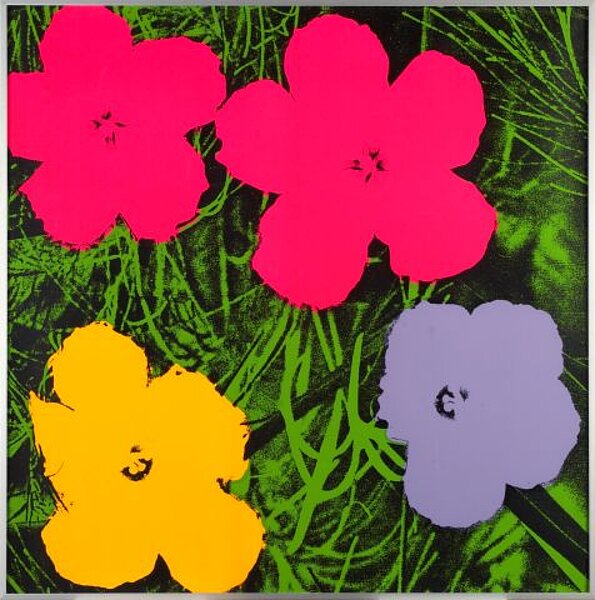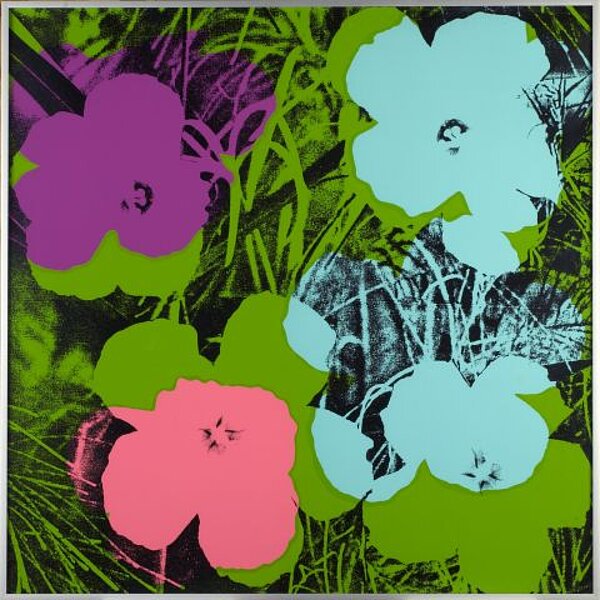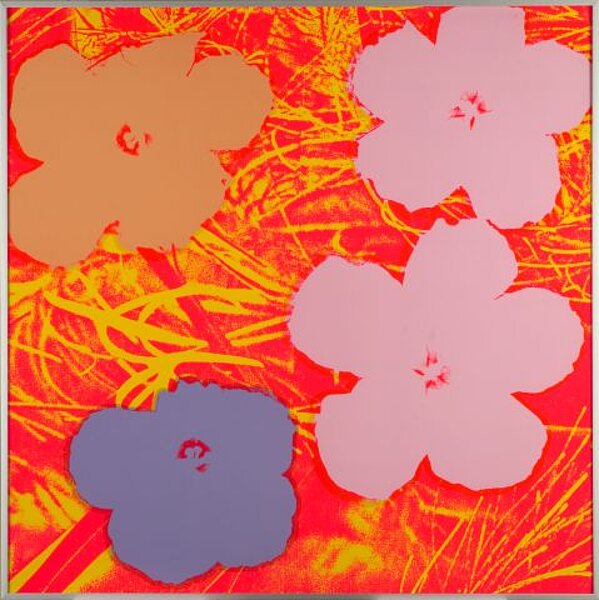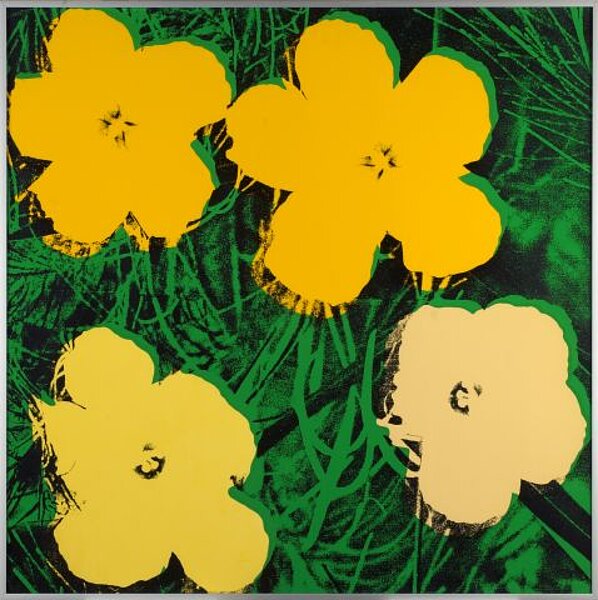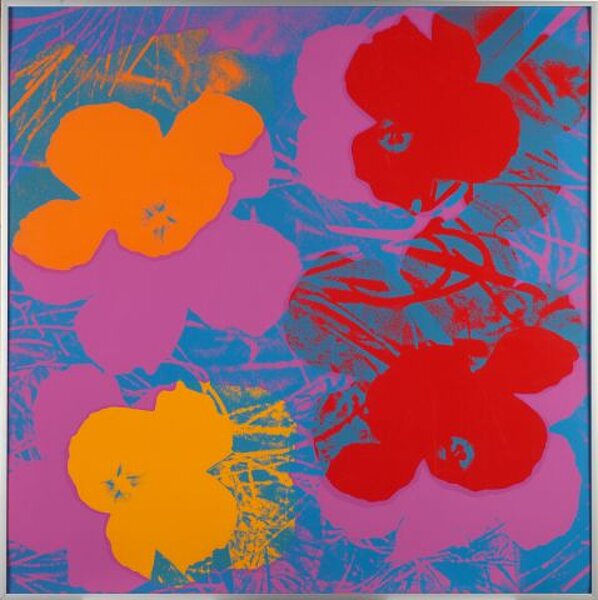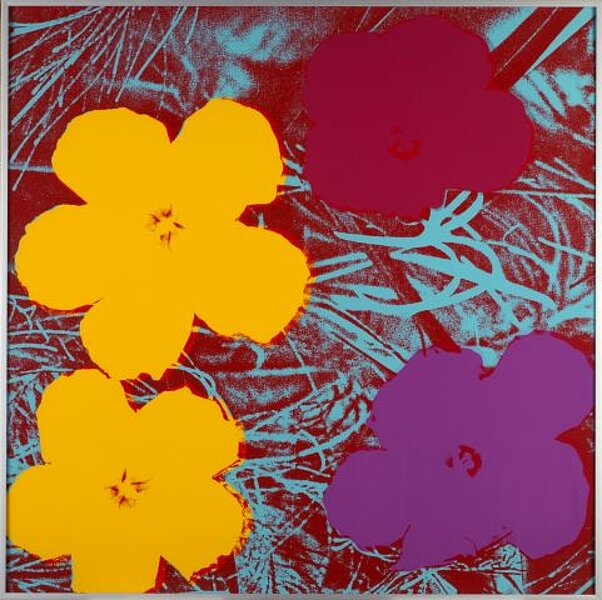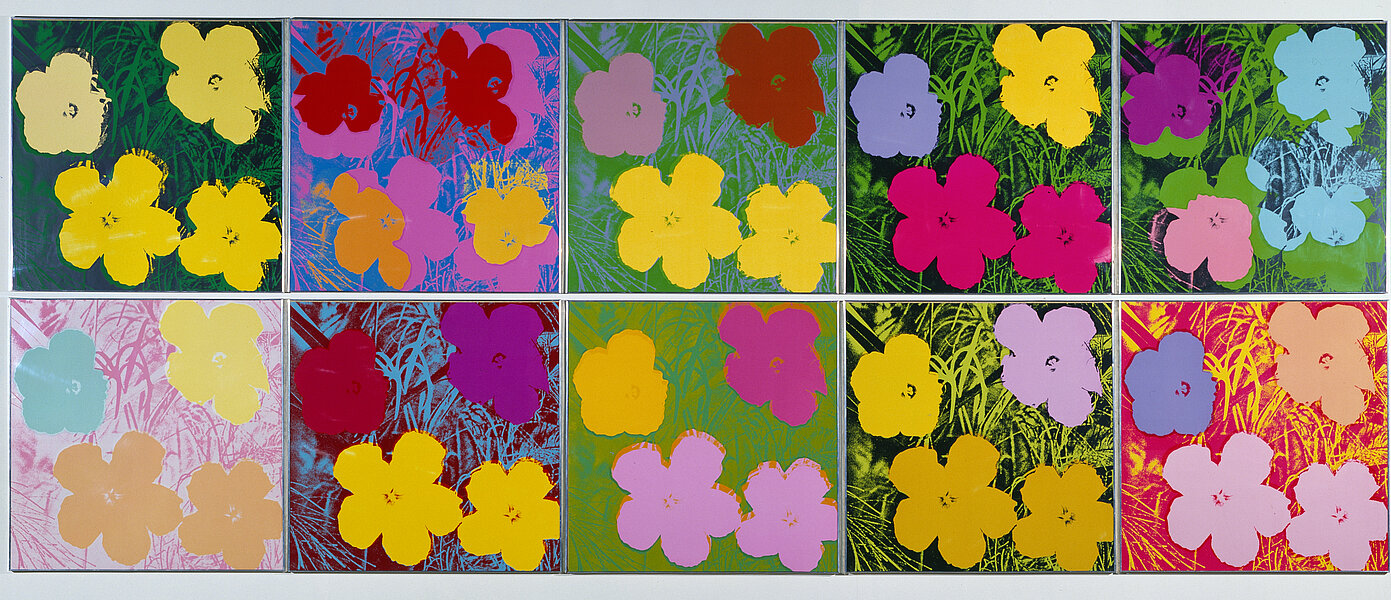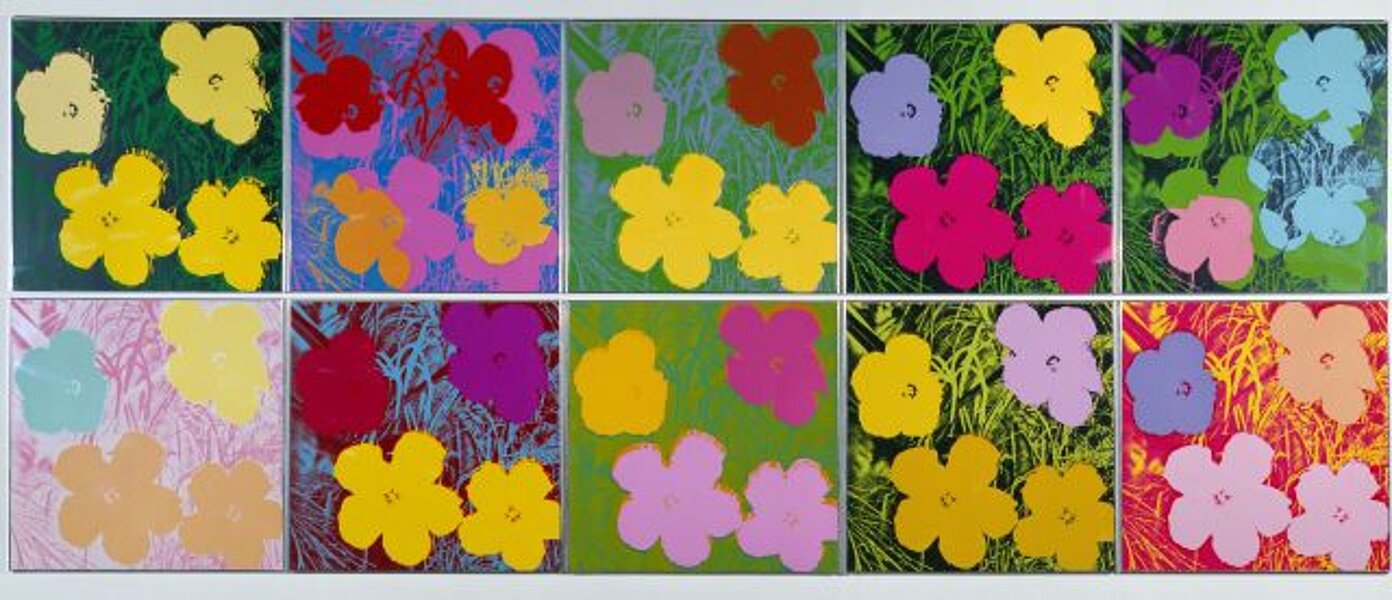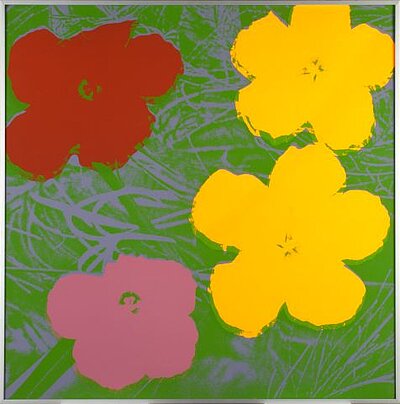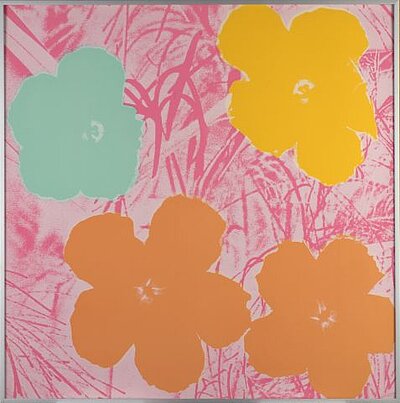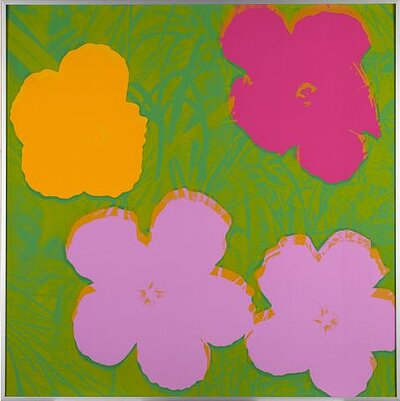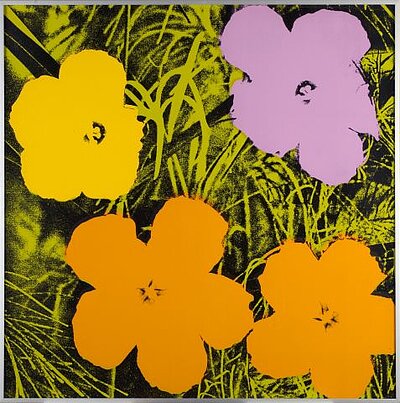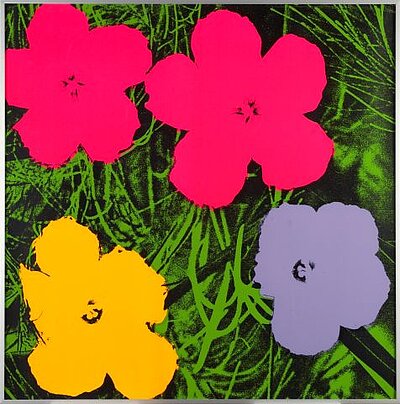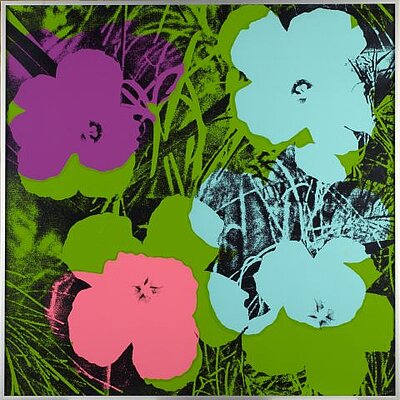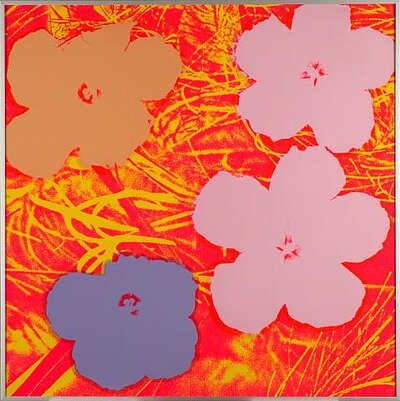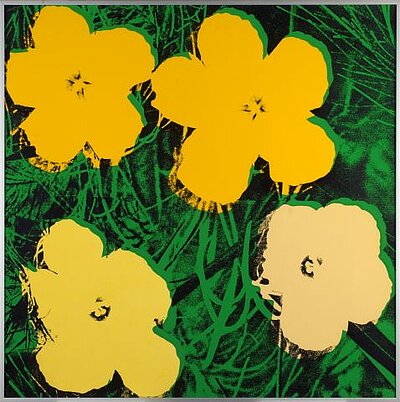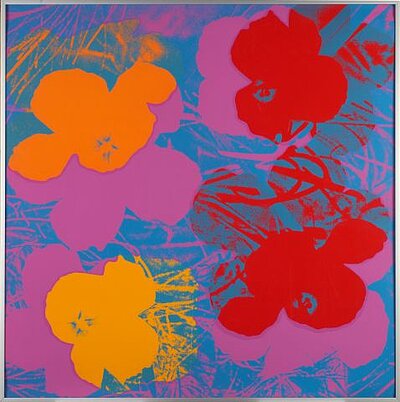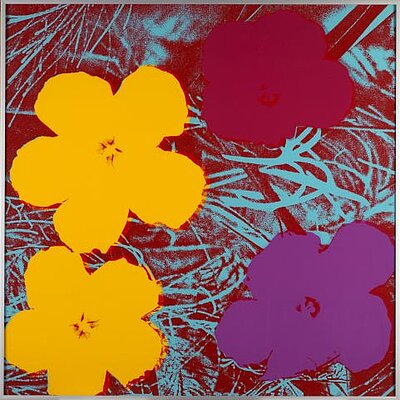
Warhol, Andy
Flowers
1970
| Object description | 10 Silkscreens on paper |
|---|---|
| Object category | graphics |
| Material |
Object:
Siebdruckfarbe
Support:
paper
|
| Technique |
Objekt:
screen printing
|
| Dimensions |
Gewicht:
weight: 9 kg
Object:
height: 91,5 cm,
width: 91,5 cm,
height: 93,3 cm,
width: 93,3 cm,
depth: 2,8 cm
|
| Year of acquisition | 1980 |
| Inventory number | ÖL-Stg 151/0 |
| Creditline | mumok - Museum moderner Kunst Stiftung Ludwig Wien, Leihgabe der Österreichischen Ludwig-Stiftung |
| Rights reference | Bildrecht, Wien |
| Further information about the person | Warhol, Andy [GND] |
| Literature |
Henri Matisse. Mit der Schere zeichnen. Meisterwerke der letzten Jahre Flowers & Mushrooms Tamuna Sirbiladze : not cool but compelling : Werke 1986-2015 |
The original for the silkscreen print, "Flowers", made in 1970, comes from the US American magazine for modern photography. Warhol enlarged a section and over-exposed it so much that all the details of the hibiscus flower disappeared. Four large, five-petalled flowers are what remains and these were printed on square paper in intense colors. The editions of these flowers were large. In Warhol’s series the ambitious photograph of the individual blooms have been simplified into an endlessly repeatable decoration. The artwork does not show a unique piece of nature that can be appreciated for its individual beauty and incorporated into the artist’s picture as special. It is, rather, that the real blossom undergoes a double process of reproduction, first in the photograph and thereafter in the silkscreen derived from it. Variations of color in various combinations make the motif an endlessly repeatable, flat ornament. Warhol used images from newspapers and magazines for many of his silkscreen works. This changed from series to series, however, but since he failed to obtain permission to reproduce the flower photograph he was successfully sued by photographer Patricia Caulfield and had to pay damages. From that point on he used only his own Polaroid images to generate his subjects.
© mumok – museum moderner kunst stiftung ludwig wien
